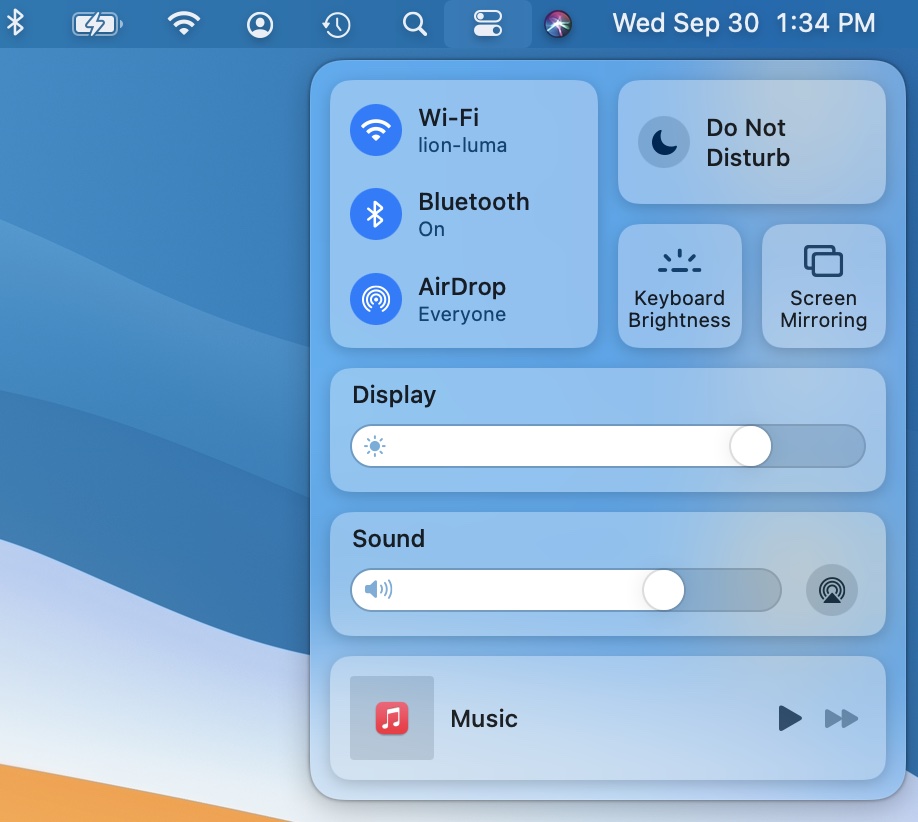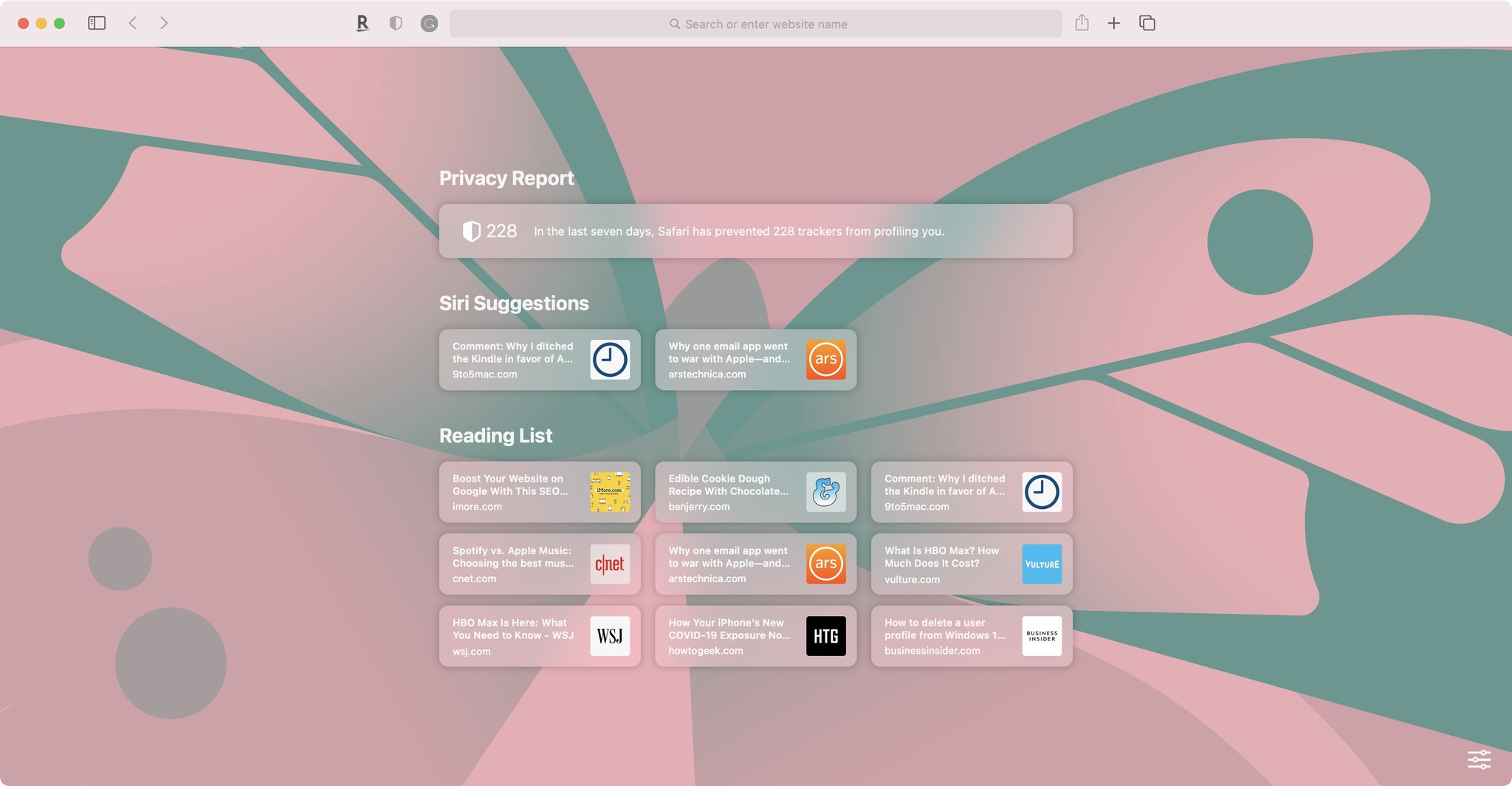Note: The latest version of the Mac operating system is macOS 13, or Ventura.
Version 11 of the macOS was released to the world on November 12, 2020 — and it was a big one that was well received since the day it was announced. macOS Big Sur included many exciting new and enhanced features starting with its refreshed look.
And what a look it is! Big Sur introduced the biggest design change to the Mac platform since the introduction of Mac OS X. It also includes easier navigation and more controls for users.
Big Sur was followed in 2021 by macOS 13, called Monterey; our macOS Monterey review said it was “a worthy update with some holes still to fill.” And we expect Apple to release macOS 14 this summer at WWDC 2023.
Why Big Sur, you ask? Since 2013, Apple has named operating system updates for Mac after locations in California. Before macOS X, we had Mavericks, Yosemite, El Capitan, Sierra, High Sierra, Mojave, and Catalina. This year it’s Big Sur, a rugged and mountainous section of the Central Coast of California between Carmel Highlands and San Simeon. Here’s everything else you need to know about macOS Big Sur.
macOS Big Sur: The iMore Review
The moment you boot back up into macOS Big Sur, you know pretty much everything you need to about it. Your profile picture is bigger. The password field is rounder. The Mac has never looked more like the iPad and yet… and yet… the startup chime is back. Fully back, no terminal command needed. (Wall-E would be so proud.)
I think that’s why Big Sur was chosen as the name for macOS 11 — yes, Apple has finally taken the Mac to 11 rim shot dot wav — Big Sur was chosen because it melds the beauty of the coast with the power of the mountains.
That power represents the Mac’s upcoming transition away from Intel and AMD silicon to Apple’s own, custom systems-on-a-chip. Similar to what they use in the iPhone and iPad. It’s going to complete a common, shared architecture across Apple’s major product lines.
Read our complete macOS Big Sur review for all the details.
Current version: Big Sur 11.7.6
In April 2023, Apple released four new software updates designed to help make older devices more secure following a pair of exploits that are said to have been used in the wild.
The macOS Big Sur update (as well as an update to macOS Monterey) are both compatible with MacBooks that go all the way back to 2013 which is, according to the trusty iMore calendar, a whole ten years ago. The iMac from 2014 is covered as well. None of those machines support macOS Ventura, so they’d be left defenseless if it wasn’t for macOS Monterey 12.6.5 and macOS Big Sur 11.7.6.
Apple says the two updates deal with the same IOSurfaceAccelerator issue as did updates to the iOS and iPadOS released at the same time, but there’s no mention of a WebKit issue. That’s because Apple already released a standalone Safari update that fixes the WebKit issue on the Mac. Because of course it did.
What’s new in macOS 11 Big Sur?
Apple has refreshed the design for macOS significantly both as an operating system and streamlining apps. Mail and Photos look at lots like iOS/iPadOS, and Notification Center includes a single view for the first time.
What’s new: Design changes

Called the “biggest design upgrade since the introduction of Mac OS X,” Big Sur has easier navigation and more controls for users. Everything here has been refined, from the curvature of window corners to the palette of colors and materials.
- Icons in the Dock have been designed to be more consistent with icons across the Apple ecosystem.
- Buttons and controls now appear when needed and recede when they aren’t necessary.
- A customizable menu bar includes an all-new Control Center that delivers quick access to controls from the desktop. From here, for example, you can find Wi-Fi and Bluetooth controls, and ones to play music and enable Dark Mode. You can also add your favorites.
- An updated Notification Center includes a new design and features both alerts and widgets in a single view. Notifications are now grouped according to the app, and some of these are also interactive.
What’s new: Notable App changes

Safari: The native web browser includes a significant update in macOS Big Sur. New features include a privacy report for every site visited and password monitoring. Safari now uses tracking prevention to identify and prevent would-be trackers from profiling or following you across the web. The latter matches known security breaches and shows you had to change your affected passwords.
Extensions have also been refreshed, and you can now decide which sites are allowed to access these extensions and for how long. Extensions now have a more prominent place in the Mac App Store.
You’ll also find a custom Home page feature in Safari that includes the ability to add shortcuts, your Reading List, and more. Built-in language translation has also been added. Apple also promises an improved tab design.
Finally, Apple says the next version of Safari is 50 percent faster than Chrome in loading times and more power-efficient.
Messages on the Mac: After Safari, Messages is the native app that got the most updates. Most of the new features come from iOS/iPad, but not all.
With pinned conversations, you can put your favorite conversations at the top of the screen. You’ll also find tap backs, typing indicators, and recent messages animations above the pins.
Meanwhile, with inline replies, you can now reply directly to certain messages in any conversation. In doing so, a new thread under the original reply automatically gets started.
Messages also now include group photos, trending images and GIFs, effects, highlighted mentions in group chats, and finally … Memoji.
Finally, the app offers a new take on search. It’s faster and easier to use and now organizes your results into links and photos and highlights matching terms.
Apple Maps: On Mac, you’ll find a new version and design. It offers all-new guides from trusted resources and the ability to create your own. These guides can include your favorite restaurants, parks, and vacation spots. Apple Maps for Mac also now includes detailed indoor maps of major airports and shopping centers. Cycling and electric vehicle trips can now be routed on a Mac and sent directly to the iPhone to have when on the go.
Mac App Store offers new privacy tools in macOS Big Sur. For each available app, you’ll find a summary of its developer’s privacy practices before you download it. Like nutritional labels, you’ll learn what data each app collects and whether that data is used across other apps and websites.
What’s new: Other changes
The macOS Big Sur update includes other useful new features. Like the others, these will also be discussed in the coming weeks at iMore. These include:
- AirPod device switching means your tunes will carry with you across all your active Apple devices, so you’re always using the one closest to you.
- The Photos app has new editing tools, including an improved Retouch tool powered by machine learning.
- Listen Now is the new home for Apple Music, featuring new releases, artist interviews, and playlists personalized for you — all in one place.
- Cameras that support HomeKit Secure Video can now use facial recognition and activity zones, allowing you to tailor notifications to specific people or specific areas in your camera’s view.
- A smarter Siri also awaits you in macOS Big Sur as the voice assistant adds more web knowledge.
You can find the full list of macOS Big Sur features on the Apple website.
macOS 13: Ventura
Apple introduced macOS Ventura to the world at the 2022 WWDC, Apple’s annual developer showcase where the company traditionally launches new releases to its major software and operating system platforms. The successor to macOS Monterey (version 12 of the OS) and macOS Big Sur (version 11), Ventura offers many new and updated features that bring the Mac experience closer to iOS/iPadOS and runs on most Macs released during the past five years.
macOS Big Sur: Questions and Answers
You’ve got questions about the Big Sur software, and we’ve got answers. Wondering whether it’s worth it to upgrade? Wondering what the new software brings? We’ve got answers to all of your questions.
You most likely can. The Big Sur version of the Mac operating system was designed for compatibility and meant to run on older hardware. It will run on the following devices:
- MacBook (2015 or newer)
- MacBook Air (2013 or newer)
- MacBook Pro (Late 2013 or newer)
- Mac mini (2014 or newer)
- iMac (2014 or newer)
- iMac Pro (2017 or newer)
- Mac Pro (2013 or newer)
If your Mac doesn’t support macOS 11 Big Sur, you might want to consider buying a new iMac, MacBook, or other Mac.
You can download macOS Big Sur for free on any supported Mac through the Mac App Store or under Settings on your computer:
- Click on the Apple icon in the upper left corner of your Mac’s screen.
- Select System Preferences from the drop-down menu.
- Click Software Update.
- Click Update Now next to the macOS update.
- Your Mac will need to restart after the download has been installed, so make sure you save your progress for any program you are currently working in.
Read our complete guide on how to download macOS updates for more details.
